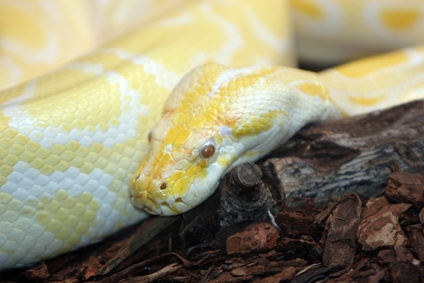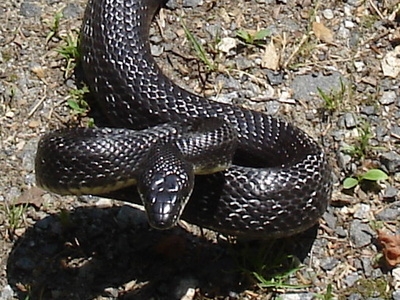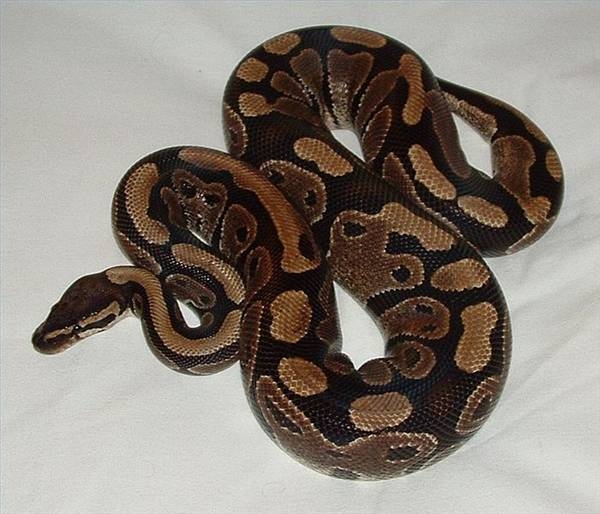
How to Treat Infections of the Burmese Python Snake. Some infections of the Burmese python can be treated at home, and other infections require the help of a qualified veterinarian. The most common causes of respiratory infections are improper cage or aquarium temperatures. Mouth rot develops when temperatures in the python's cage drop too low and certain types of bacteria.are present. Mites can be a real nuisance and in large numbers can be dangerous to the snake. Treating these infections requires some diligence on your part to prevent the condition from returning.

Watch your Burmese python for classic symptoms of respiratory infections or mouth rot like bubbles or mucus coming out of its nose and mouth. It looks like long stringy saliva. The python will leave its mouth open for no apparent reason, and when it is time to shed it might not shed completely. There might be sores or lesions in the snake's mouth. Either your python contracted a virus because its cage environment is too cool or it was exposed to another snake with a virus.
Increase the daytime temperature of the snake cage to 90 to 95 degrees Fahrenheit. You can do this by turning up the thermostat if your snake is enclosed in its own room or adding another heat source to the cage, such as an overhead heat bulb.
Remove all possible causes of stress to the snake. Do this by making sure there is ample water in the water container and a place the snake can hide its entire body. Use a large overturned plastic container with a hole cut in one side, for example. Use blankets or sheets to cover all but one of the clear sides or windows of the cage or aquarium. Watch the snake for 24 to 48 hours for signs of improvement. This is the only known home treatment for respiratory infections and mouth rot.
Test for mites by rubbing your hand over the python's body when it is safe to do so. If you see any red or brown streaks on your hand, the python has mites. You also might see these reddish or brown streaks in the cage or aquarium itself. They are small, but if you see even just one or two, you need to treat your python for mites.
Rub the snake from the head down with a thin layer of baby oil; this will suffocate the mites. Do not get any in the eyes, nose or mouth of the python. If there are no signs of mites, you do not need to rub baby oil on the snake or continue with Step 6, which is treating the cage.
Sterilize the snake cage with boiling water, making sure it is completely dry before placing the snake back in.
 Black Snake Diet
Black Snake Diet
Black Snake Diet. Bla
Black Snake Diet
Black Snake Diet
Black Snake Diet. Bla
 How to Know If a Ball Python Is a Boy or Girl
How to Know If a Ball Python Is a Boy or Girl
How to Know If a Ball Python Is a Boy or Girl
How to Know If a Ball Python Is a Boy or Girl
 How to Tell If a Snake Is Male or Female
How to Tell If a Snake Is Male or Female
How to Tell If a Snake Is Male or Female
How to Tell If a Snake Is Male or Female
 How to Treat Infections of the Burmese Python Snake
How to Treat Infections of the Burmese Python
How to Treat Infections of the Burmese Python Snake
How to Treat Infections of the Burmese Python
 How to Clean Snake Cages
How to Clean Snake Cages
How to Clean
How to Clean Snake Cages
How to Clean Snake Cages
How to Clean
Copyright © 2005-2016 Pet Information All Rights Reserved
Contact us: www162date@outlook.com